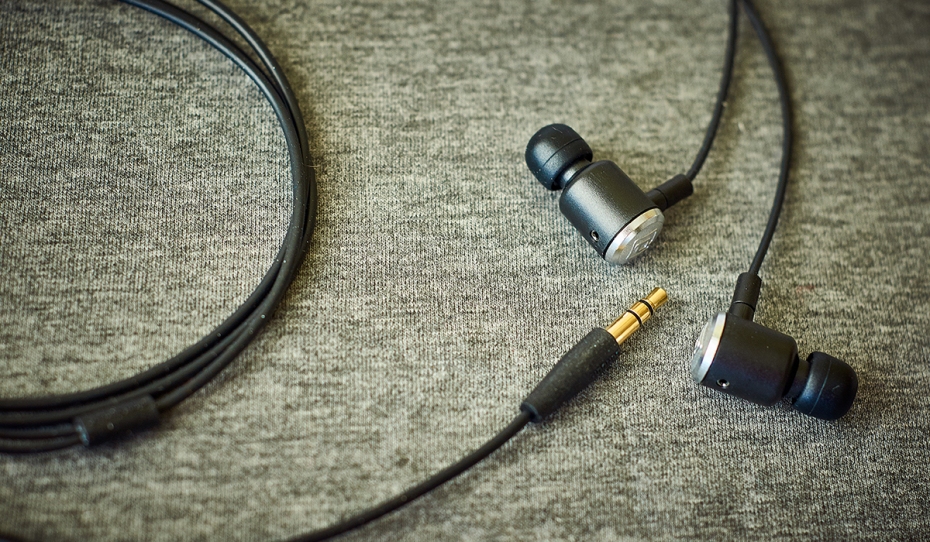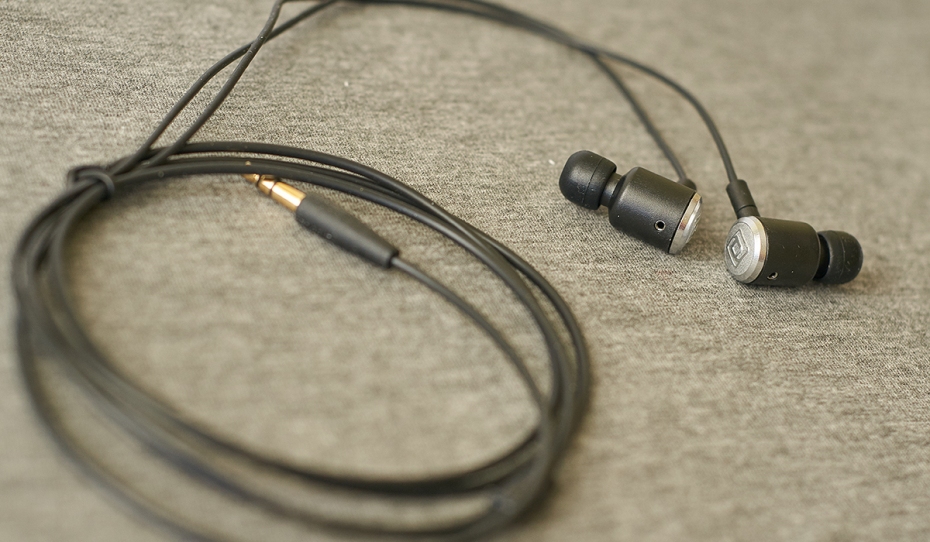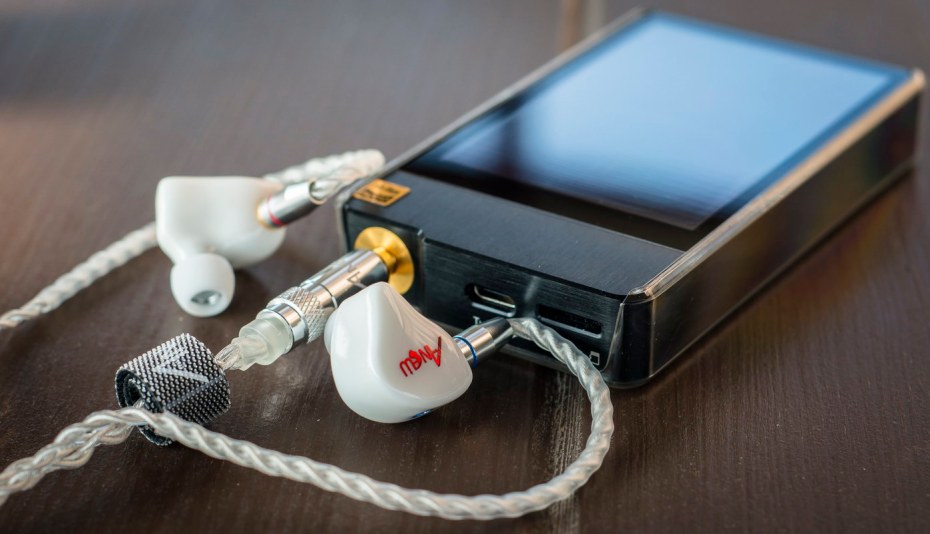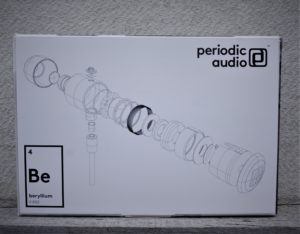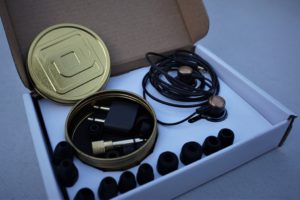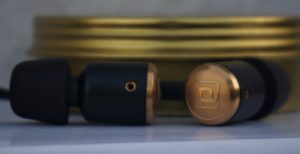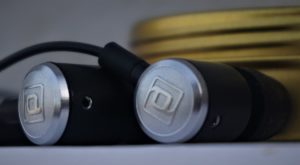A bit about me and my approach to this review
Relatively inexpensive IEMs like the Periodic Audio Mg are a category of special interest to me. I spend a lot of time in either a noisy lab, or a noisy office environment, and I use IEMs for their combination of sound isolation and portability. While products with eye-watering prices, and hopefully performance to match do exist, they don't fit my use case. Background noise limits the impact of excellent audio performance, if it's present, and the constant wear-and-tear rewards robust construction, and the possibility of my leaving them behind somewhere, or of them walking off, makes sinking too much money into an expensive pair unattractive.
How the Mg fits into my use-case
Periodic seems to recognize that a market exists for durable IEMs for use in noisy environments exists, and they further seem to be positioning the Mg into that market, writing on their website:
"The sonic signature of the Mg IEM is relatively neutral but with a brighter top end [...]. Many people prefer this sound for use in noisier environments. All [Periodic] IEMs feature polycarbonate bodies for high strength [and] butyl rubber strain reliefs" (emphasis mine).
Accordingly I’ll discuss use both at home, in good listening conditions, as well as the suitability of the Mgs as a more mobile option.
The Beginning - Acquisition and Goodies
This particular Mg pair was given to the recent Bay Area meetup by @DanWiggins, the head guy over at Periodic, with the understanding that it would be used, and honest impressions given. I
I won the pair in a raffle, so this is me holding up my side of the bargain.

The Mg comes with a normal amount of kit, including an airplane adapter, a 1/8" to 1/4" adapter, several different size ear tips, and a carrying case straight out of the Skoal collection. The airline adapter I understand, same with the case (although I have more to say on it later) but the 1/4" adapter puzzles me a bit. I know they're often included as standard with headphones that have 1/8" terminations, because many amplifiers have 1/4" outputs. However, in a budget conscious product, with a published sensitivity of 101 dB SPL at 1mW in ear, making nice with desktop amplifiers seems a bit odd. On the other hand, if I'd just gotten my brand new Schitt Fulla 2 and Mgs out of the mailbox, excited to see what all the hifi fuss was about and then couldn't listen I'd be pretty unhappy. Maybe then the adapter is included as a gateway to non-phone based audio, an idea I can get behind. For me though I mostly used a Fiio X5 3rd gen DAP with the Mg, which like most DAPs has an 1/8" output.
About that case though - it's to small. The earphones can be made to fit inside, but only just, and only if they're laying flat. Keeping coiled up earphones in exactly the correct orientation, while installing a screw lid over them is tricky. Coiled earphones tend to come uncoiled, and if the coil is is constrained in the x-y plane the uncoiling then expands in the z direction, which doesn't help in closing the case. Also, since the case does have a screw-on lid, there's an area defined by the screw depth and the ID-OD difference between the lid and the case body which is just perfect for a cable to creep into and get pinched.
The difference in size between the Mg case (left) and, for example, a Massdrop X Noble Luxe case (right) is striking.
Sound
Now that the case talk is out of the way, let's consider the sound. Periodic does include frequency response plots in the packaging, but given the printing resolution I suspect they're really just science-y branding and not intended to be read.
If you do want to read frequency response charts for the Mg higher resolution ones are available on the Periodic website. Since I have the actual monitors in hand I'm not going to bother about that - I'll just listen to them, never mind the packaging.
All testing is done with the Mgs coming straight out of a Fiio X5 3rd gen with 44.1kHz FLACs unless otherwise noted.
Overall the sound coming out of the Mgs is pretty good, and these are $99 earphones, so pretty good is solid. Comparing to higher performing (and pricer) options it’s possible to detect a general indistinctness, but at this price point, the Mgs are very competitive. Periodic themselves recognize this price/performance tradeoff perhaps even more sharply than some of their competitors. They sell the Be for 4x the price. It’s exactly the same housing, cabling and kit, but with a different driver. Having heard the Be as well I can tell you that its clearer than the Mg.
Getting more specific I find the sound to be strongly titled towards the treble. In Queen's "We Will Rock You" for example, the foot stomps and handclaps that accompany Mr. Mercury are present and compelling, until the 1:22 mark, when a peal of feedback announces the arrival of Brian May and Red Special. It's at this point that the treble dominates, and particularly the foot stomps (bass) become indistinct and difficult to hear. Something similar happens with "Another One Bites the Dust". Here John Deacon plays his famous base riff unaccompanied twice to kick off the track. On the third repetition Brian May joins in, with a palm muted double of the baseline, two octaves up. Deacon keeps playing the riff, but with the Mgs it's difficult to tell. It's not that there isn't any lower frequency sound, it's just that it gets mushy and I have trouble picking it out as any instrument in particular. Now it could be the Brian May just doesn't like the rest of Queen, and is intentionally overshadowing them. However, I've just been to see Bohemian Rhapsody in the theater and he seems like a nice guy, so it's probably the monitors.
As I mentioned above, I find the inexpensive IEM space interesting, so I have two other ~$100 pairs on hand, the Massdrop x Noble Luxe, and a Echobox Finder X1. None of them, including the Mgs, are all that great in terms of bass response. The Luxe are probably the best of the bunch here (they have their own issues too, but that's a topic for another time).
On tracks without strong base presence, for example Carl St. Clair and the Pacific symphony Orchestra's recording of Toru Takemitsu's "From Me Flows What You Call Time" fare much better. The various xylophone parts, which are generally in the upper register, come through nicely but don't over-compete the midrange-focused orchestra.
Despite the treble focus the Mgs really aren’t fatiguing. I like the sound, particularly for classical music at home.
There is a sizable bass port on each monitor - I’m not really sure what it’s doing, but sound isolation does suffer somewhat as a result. I’m less impressed with the Mgs in noisy environments, preferential treble tuning or no.
In the interest of completeness I did also try the Mgs briefly with a Millet Hybrid Starving Student amp. This amp not an ideal partner for such sensitive IEMs. It has a relatively high noise floor and didn’t improve clarity vs. running straight out of the Fiio. I don’t have anything else amp-wise on hand that would be better suited to the Mgs - but again, I don’t think they call for a dedicated amp, nor would they particularly benefit from one.
Soundstage
I find the soundstage of the Mgs to be reasonably wide (in the horizontal plane), but quite also short (in the vertical direction). The width might be down to the relatively long geometry of the IEMs - I’m not exactly sure. Overall though, very pleasing at this price point.
Build Quality
Here’s where I start to have issues with Mgs, particularly given Periodic’s nods to durability on their website. The cables are extremely thin, 2mm before the split, 1.5mm afterwards, and very flimsy. They’re also not replaceable. Remember above when I said the case talk was done with? Well, I’ve changed my mind - here’s a picture of the result if you pinch a cable while screwing down the case lid. Why is the case so small?
You’ll want to use the case though because even though these earphones don’t have an inline remote/microphone module they also don’t have a collar that slides along above the split to keep both earphones together for storage. Even a $15 pair from Apple has one of those. Build quality is an area where the similarly priced Echobox Finder X1 (for example) beats out the Mgs handily. So while I like the Mgs' sound with a mobile DAP actually using them on the go is likely to result in damage.
Periodic does offer a 5 year warranty on workmanship and defects, but not on breakage due to mishandling, so it doesn’t really help with the Mgs’ inherent fragility.
In Summary
I’m confused by the Mgs. If you’re in the market for some inexpensive IEMs, for use out of a mobile source, but in quiet environments, and with a use case where wear and tear aren’t an issue, the Mgs are a good choice. That’s a lot of qualifiers. They are nice sounding IEMs for the price and I do like that about them, but at the same time, there are significant usability drawbacks that prevent me from giving the Mgs a full throated endorsement.











